
Electric Race Car CFD Analysis
Many see the future of automobiles to be electric, so it's only natural to assume that the same may apply to motor racing. Luke Horsfall is one who believes electric race cars have a bright future, having set up Horsfall Racing (along with Laura Horsfall) to build electric race cars and race them in the F24+ electric race car class in the UK. The restrictions of this particular formula keep budgets and speeds relatively low (at least by Formula 1 standards). Making best use of the limited power in F24+ is crucial, and that places the emphasis on low-drag, aerodynamic race cars. I bet you can guess where this is heading - this is territory ripe for Caedium's Computational Fluid Dynamics (CFD) capabilities.
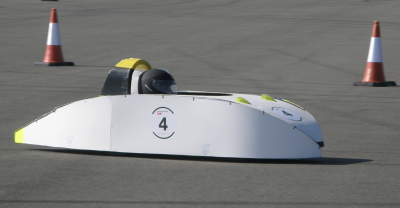 Super Swoosh:Horsfall Racing's 2009 Electric Race Car
Super Swoosh:Horsfall Racing's 2009 Electric Race Car
Background
Horsfall Racing's chief designer Luke Horsfall has produced 7 generations of electric race cars, dating back to his school days. For his most recent, 8th generation design he has turned to CFD as a cost-effective means to help optimize the aerodynamics of his car. Unlike F1 there's little use in sacrificing drag for downforce in such relatively low-powered cars, so the aerodynamic design focuses on minimizing drag, which favors a sleek-streamlined exterior. Luke recently enlisted Symscape to help with the CFD analysis of his latest design for the upcoming 2010 season.
Geometry
Luke's latest race car design was created in a CAD system, so a STEP geometry file was used to transfer the geometry into Caedium Professional. Using the various geometry creation and fixing tools in Caedium the original geometry was modified in order to represent the volume of air surrounding the car. By assuming a symmetric car and flow field, only half of the flow volume is needed for the CFD simulation. Symmetry allows the simulation to run twice as quickly and only use half the memory that would otherwise be necessary.
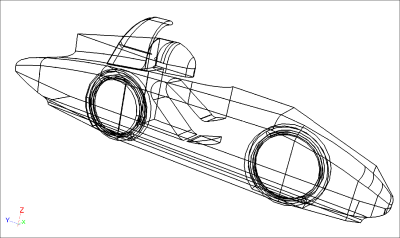 Original Geometry
Original Geometry
Physics
The CFD simulation setup included:
- Free-stream air speed and moving-ground speed = 15 m/s (54 km/h or 34 mph)
- Wheel rotation speed = 666 rpm
- k-omega SST turbulence model
The race car, its wheels, and the ground plane were specified as walls (impregnable by air). Additionally the wheels were assigned a rotational speed and the ground plane was configured with a linear speed matching the free-stream air speed. The sides and ceiling of the flow volume were specified as symmetry planes to simulate the other half of the flow volume and mimic free air. The upstream face was specified as an inlet and the downstream face was specified as an outlet.
Results
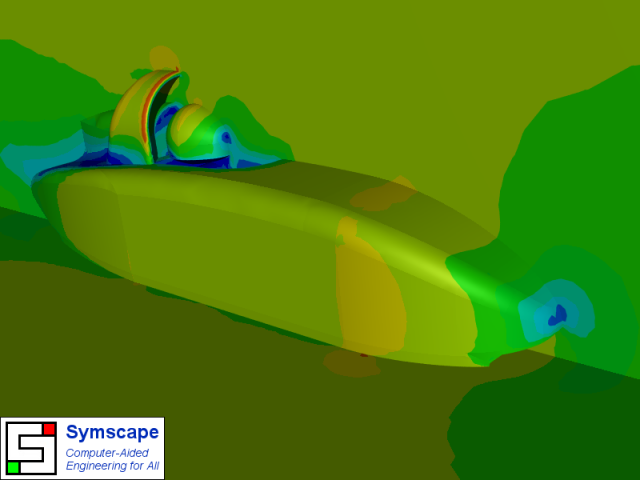 Front View of Velocity
Front View of Velocity
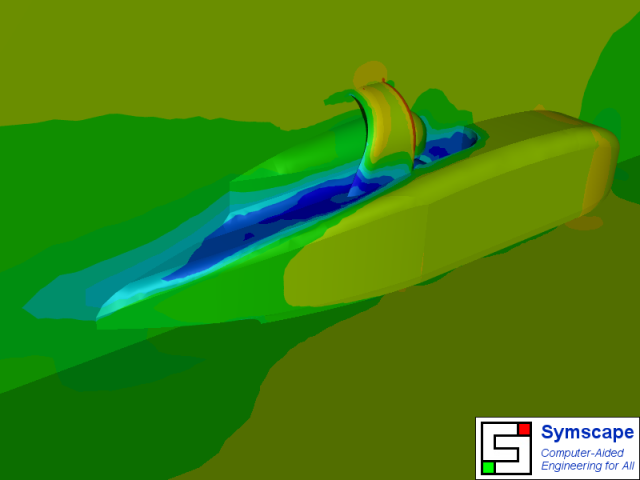 Rear View of Velocity
Rear View of Velocity
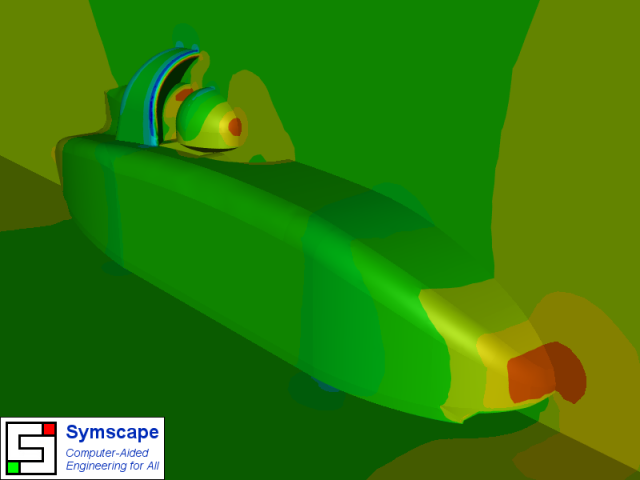 Front View of Pressure
Front View of Pressure
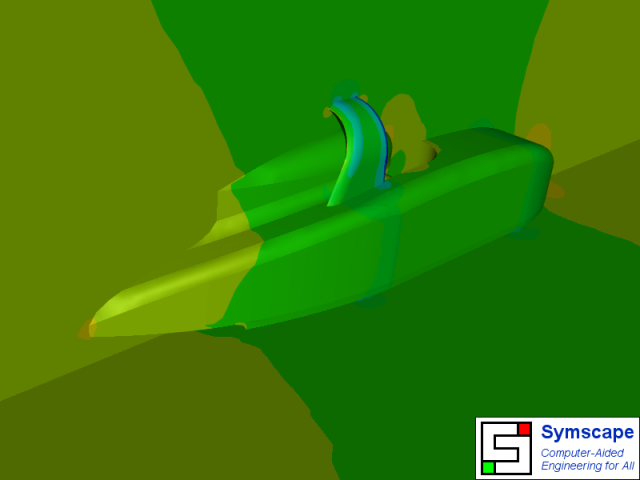 Rear View of Pressure
Rear View of Pressure
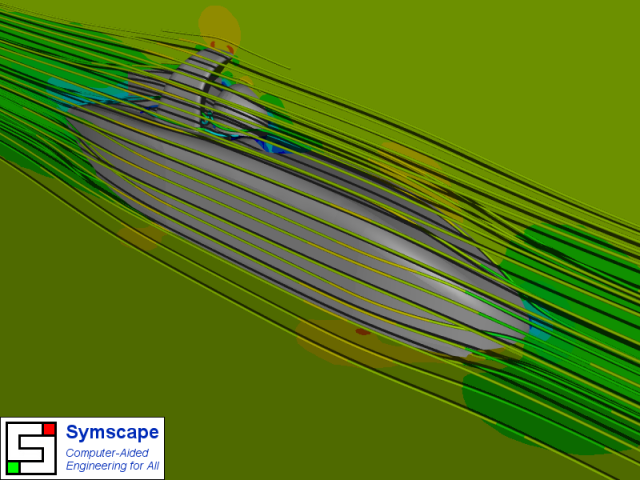 Front View of Streamlines
Front View of Streamlines
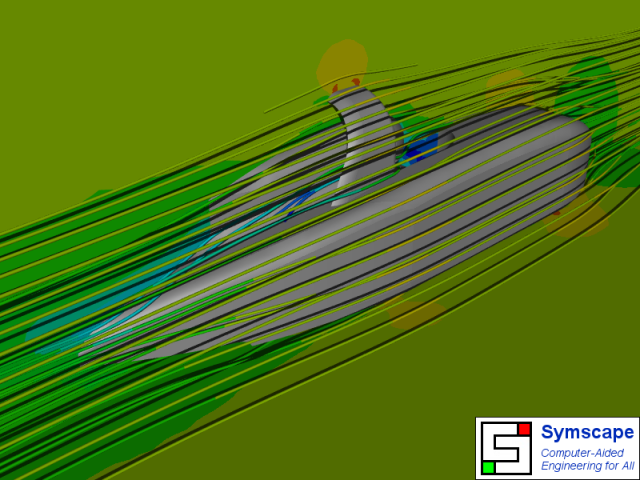 Rear View of Streamlines
Rear View of Streamlines
The drag coefficient (CD) was 0.19.
Conclusion
Clearly Luke's experience in designing low-drag race cars is evident in this latest design when you compare its CD = 0.19 to that of a typical passenger car, such as a Honda Civic with CD = 0.31.
- Login to post comments



Comments
rotational speed
Would you please let me know how did you define the rotational speed of wheels? What kind of boundary condition did you used for?
Thanks
Review rotating wheel tutorial
Please review the tutorial "Flow Over a Rotating Wheel with Moving Ground".
Thanks a lot! That was quite
Thanks a lot! That was quite helpful.